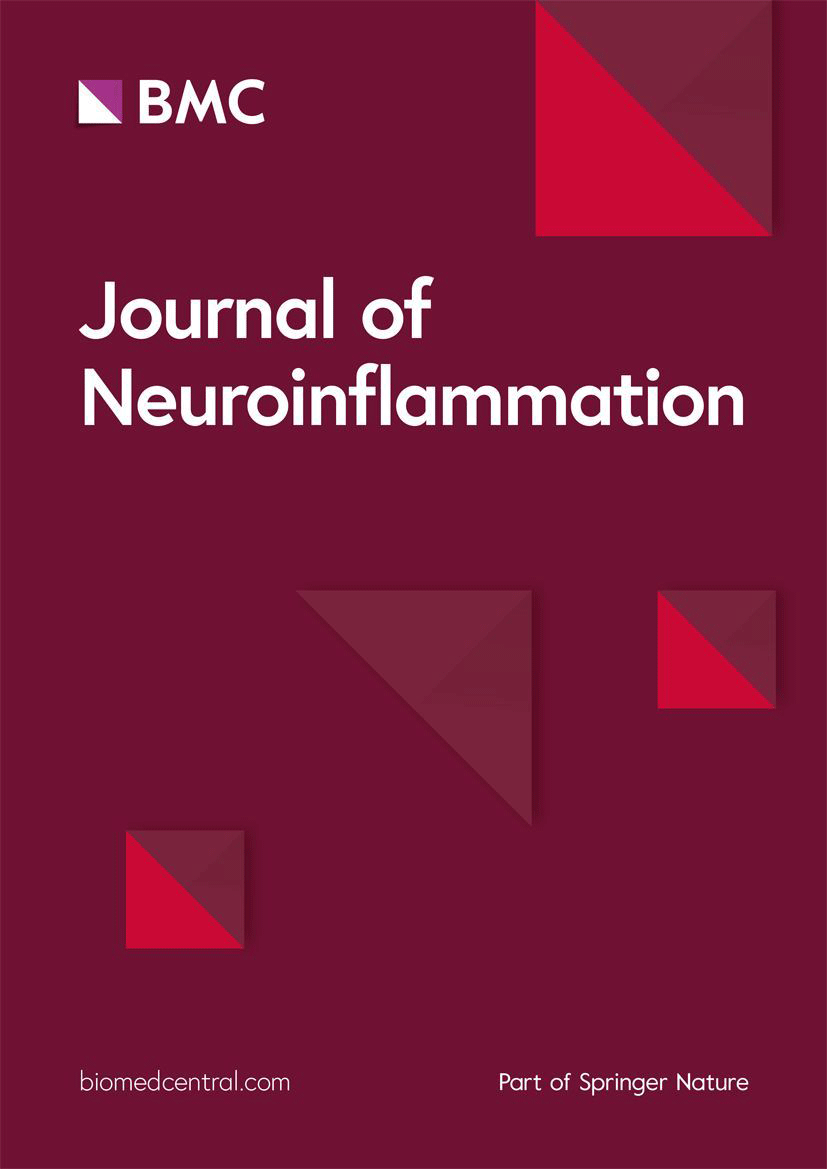在海湾战争病小鼠模型中,暴露于氯菊酯会激发神经炎症应激反应,通过激活小胶质细胞驱动类似抑郁症的行为
IF 9.3
1区 医学
Q1 IMMUNOLOGY
引用次数: 0
摘要
海湾战争疾病(GWI)是一种慢性多症状疾病,约有 25%-32% 的海湾战争退伍军人患有这种疾病,其特征是出现认知障碍、精神障碍、慢性疲劳和肠胃不适等一系列症状。虽然海湾战争综合症的确切病因尚不清楚,但人们认为它是由部署期间接触的有毒物质与压力等其他因素共同造成的。在本研究中,我们试图对以下假设进行评估:暴露于菊酯类毒素可能会引发神经炎症应激反应,并诱发与 GWI 相关的精神症状。具体来说,我们建立了一个 GWI 小鼠模型,以评估长期接触氯菊酯和不可预测的应激所产生的影响。我们发现,让小鼠长期接触氯菊酯 14 天,然后再接受 7 天不可预测的应激,会导致小鼠出现类似抑郁症的行为。这种行为变化与小胶质细胞表型的明显改变相吻合,表明海马中的小胶质细胞被激活。我们发现,通过小胶质细胞中的Gi抑制性DREADD受体阻断小胶质细胞的活化能有效地防止与氯菊酯和应激暴露相关的行为变化。为了阐明与暴露于氯菊酯和应激的小鼠抑郁样行为相关的不同小胶质细胞群内的转录网络,我们使用从小鼠海马中收集的 21,566 个单个细胞核进行了单细胞 RNA 测序分析。在生物信息学方面,UniCell Deconvolve 是一种预先训练好的、可解释的深度学习模型,用于解卷积细胞类型分数和预测跨空间数据集的细胞身份。我们的生物信息学分析发现,在暴露于菊酯后,应激相关的小胶质细胞群发生了显著变化,特别是与神经元发育、神经元通讯和神经元形态发生相关的通路,所有这些通路都与神经突触可塑性有关。此外,我们还观察到暴露于菊酯后应激介导的信号转导变化,包括化学突触传递的调节、神经递质受体的调节以及突触后神经递质受体活性的调节。我们的研究结果初步表明,菊酯可能会促使小胶质细胞进入炎症激活状态,而这种激活状态可由心理压力触发,从而导致类似抑郁症的行为和神经可塑性的改变。这些发现强调了与 GWI 相关的多因果因素之间协同作用的重要性。本文章由计算机程序翻译,如有差异,请以英文原文为准。
Permethrin exposure primes neuroinflammatory stress response to drive depression-like behavior through microglial activation in a mouse model of Gulf War Illness
Gulf War Illness (GWI) is a chronic multisymptom disorder that affects approximately 25–32% of Gulf War veterans and is characterized by a number of symptoms such as cognitive impairment, psychiatric disturbances, chronic fatigue and gastrointestinal distress, among others. While the exact etiology of GWI is unknown, it is believed to have been caused by toxic exposures encountered during deployment in combination with other factors such as stress. In the present study we sought to evaluate the hypothesis that exposure to the toxin permethrin could prime neuroinflammatory stress response and elicit psychiatric symptoms associated with GWI. Specifically, we developed a mouse model of GWI, to evaluate the effects of chronic permethrin exposure followed by unpredictable stress. We found that subjecting mice to 14 days of chronic permethrin exposure followed by 7 days of unpredictable stress resulted in the development of depression-like behavior. This behavioral change coincided with distinct alterations in the microglia phenotype, indicating microglial activation in the hippocampus. We revealed that blocking microglial activation through Gi inhibitory DREADD receptors in microglia effectively prevented the behavioral change associated with permethrin and stress exposure. To elucidate the transcriptional networks impacted within distinct microglia populations linked to depression-like behavior in mice exposed to both permethrin and stress, we conducted a single-cell RNA sequencing analysis using 21,566 single nuclei collected from the hippocampus of mice. For bioinformatics, UniCell Deconvolve was a pre-trained, interpretable, deep learning model used to deconvolve cell type fractions and predict cell identity across spatial datasets. Our bioinformatics analysis identified significant alterations in permethrin exposure followed by stress-associated microglia population, notably pathways related to neuronal development, neuronal communication, and neuronal morphogenesis, all of which are associated with neural synaptic plasticity. Additionally, we observed permethrin exposure followed by stress-mediated changes in signal transduction, including modulation of chemical synaptic transmission, regulation of neurotransmitter receptors, and regulation of postsynaptic neurotransmitter receptor activity, a known contributor to the pathophysiology of depression in a subset of the hippocampal pyramidal neurons in CA3 subregions. Our findings tentatively suggest that permethrin may prime microglia towards a state of inflammatory activation that can be triggered by psychological stressors, resulting in depression-like behavior and alterations of neural plasticity. These findings underscore the significance of synergistic interactions between multi-causal factors associated with GWI.
求助全文
通过发布文献求助,成功后即可免费获取论文全文。
去求助
来源期刊

Journal of Neuroinflammation
医学-神经科学
CiteScore
15.90
自引率
3.20%
发文量
276
审稿时长
1 months
期刊介绍:
The Journal of Neuroinflammation is a peer-reviewed, open access publication that emphasizes the interaction between the immune system, particularly the innate immune system, and the nervous system. It covers various aspects, including the involvement of CNS immune mediators like microglia and astrocytes, the cytokines and chemokines they produce, and the influence of peripheral neuro-immune interactions, T cells, monocytes, complement proteins, acute phase proteins, oxidative injury, and related molecular processes.
Neuroinflammation is a rapidly expanding field that has significantly enhanced our knowledge of chronic neurological diseases. It attracts researchers from diverse disciplines such as pathology, biochemistry, molecular biology, genetics, clinical medicine, and epidemiology. Substantial contributions to this field have been made through studies involving populations, patients, postmortem tissues, animal models, and in vitro systems.
The Journal of Neuroinflammation consolidates research that centers around common pathogenic processes. It serves as a platform for integrative reviews and commentaries in this field.
 求助内容:
求助内容: 应助结果提醒方式:
应助结果提醒方式:


